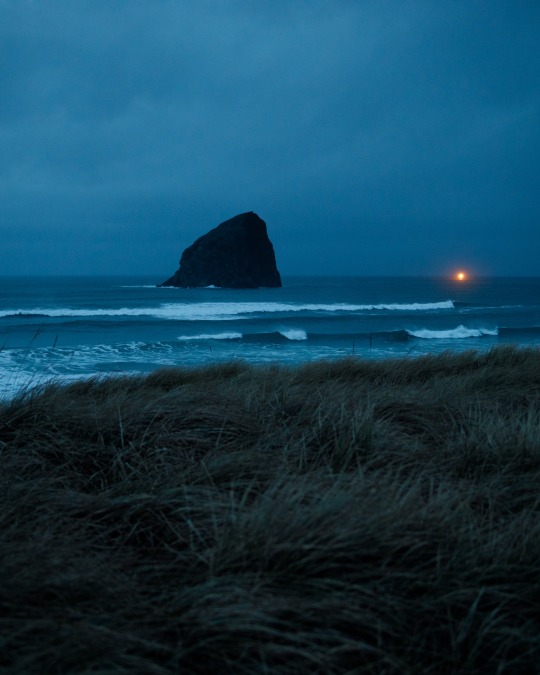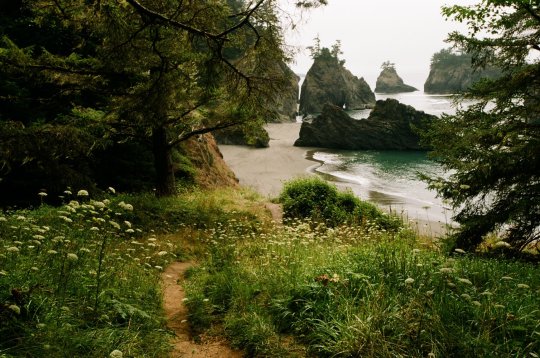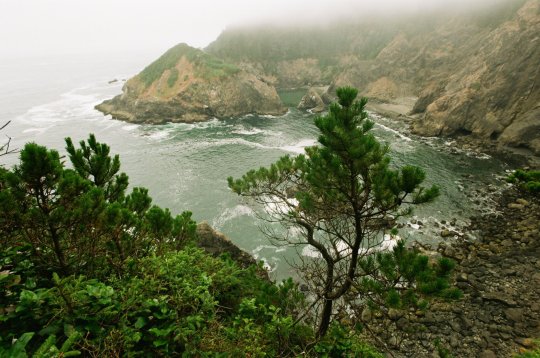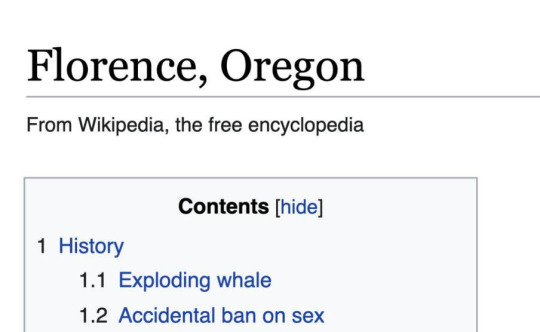#oregon
Text
#pietro maximoff#rick grimes#water#oregon#karmagisa#delena#janda gersang#muscle daddy#euro 2020#fumika baba#moleskine#manga cap#ian harding#alternative#kenhina
127 notes
·
View notes
Text




Chapter 20: Drawn to Trouble - Page 18
Chapter Synopsis: There are some odd goings on at the city park blocks, and a little girl seems to be at the center of it.
Author Comment: Wonder how Coach even plans to remove that power, but who knows what the limits of his magic are.
My Magic Grandpa is a paranormal fantasy adventure that takes place in the 90s, please check it out and spread the word if you like it
Want to have a more phone friendly viewing of the comic? Check out mymagicgrandpa.net or look for My Magic Grandpa on Tapas or Webtoons!
#comic#webcomic#artists on tumblr#supernatural#paranormal#fantasy#adventure#my magic grandpa#mmg#oregon#ch20
31 notes
·
View notes
Text

December 2017 PDX Portland Oregon U.S.A.
HACHI🐾✨🦴✨🐾
© KOJI ARAKI Art Works
Daily life and every small thing is the gate to the universe :)
#2017#December#December 2017#PDX#Portland#Oregon#HACHI#My family dog#family dog#Rescued dog#rescued#gsdlove#German Shepherd Dog#gsd#Born in Kathmandu#girl#dog#photographers on tumblr#b&w photography#black and white photography#monochrome photograph#original photography#photography#koji araki art works#iPhone#iPhone photography#iPhone6Plus
23 notes
·
View notes
Text
Greedflation, but for prisoners

I'm touring my new, nationally bestselling novel The Bezzle! Catch me TOMORROW (Apr 21) in TORINO, then Marin County (Apr 27), Winnipeg (May 2), Calgary (May 3), Vancouver (May 4), and beyond!

Today in "Capitalists Hate Capitalism" news: The Appeal has published the first-ever survey of national prison commissary prices, revealing just how badly the prison profiteer system gouges American's all-time, world-record-beating prison population:
https://theappeal.org/locked-in-priced-out-how-much-prison-commissary-prices/
Like every aspect of the prison contracting system, prison commissaries – the stores where prisoners are able to buy food, sundries, toiletries and other items – are dominated by private equity funds that have bought out all the smaller players. Private equity deals always involve gigantic amounts of debt (typically, the first thing PE companies do after acquiring a company is to borrow heavily against it and then pay themselves a hefty dividend).
The need to service this debt drives PE companies to cut quality, squeeze suppliers, and raise prices. That's why PE loves to buy up the kinds of businesses you must spend your money at: dialysis clinics, long-term care facilities, funeral homes, and prison services.
Prisoners, after all, are a literal captive market. Unlike capitalist ventures, which involve the risk that a customer will take their business elsewhere, prison commissary providers have the most airtight of monopolies over prisoners' shopping.
Not that prisoners have a lot of money to spend. The 13th Amendment specifically allows for the enslavement of convicted criminals, and so even though many prisoners are subject to forced labor, they aren't necessarily paid for it:
https://pluralistic.net/2024/04/02/captive-customers/#guillotine-watch
Six states ban paying prisoners anything. North Carolina caps prisoners' pay at one dollar per day. Nationally, prisoners earn $0.52/hour, while producing $11b/year in goods and services:
https://www.dollarsandsense.org/archives/2024/0324bowman.html
So there's a double cruelty to prison commissary price-gouging. Prisoners earn far less than any other kind of worker, and they pay vastly inflated prices for the necessities of life. There's also a triple cruelty: prisoners' families – deprived of an incarcerated breadwinner's earnings – are called upon to make up the difference for jacked up commissary prices out of their own strained finances.
So what does prison profiteering look like, in dollars and sense? Here's the first-of-its-kind database tracking the costs of food, hygiene items and religious items in 46 states:
https://theappeal.org/commissary-database/
Prisoners rely heavily on commissaries for food. Prisons serve spoiled, inedible food, and often there isn't enough to go around – prisoners who rely on the food provided by their institutions literally starve. This is worst in prisons where private equity funds have taken over the cafeteria, which is inevitable accompanied by swingeing cuts to food quality and portions:
https://theappeal.org/prison-food-virginia-fluvanna-correctional-center/
So you have one private equity fund starving prisoners, and another that's gouging them on food. Or sometimes it's the same company. Keefe Group, owned by HIG Capital, provides commissaries to prisons whose cafeterias are managed by other HIG Capital portfolio companies like Trinity Services Group. HIG also owns the prison health-care company Wellpath – so if they give you food poisoning, they get paid twice.
Wellpath delivers "grossly inadequate healthcare":
https://theappeal.org/massachusetts-prisons-wellpath-dentures-teeth/
And Trinity serves "meager portions of inedible food":
https://theappeal.org/clayton-county-jail-sheriff-election/
When prison commissaries gouge on food, no part of the inventory is spared, even the cheapest items. In Florida, a packet of ramen costs $1.06, 300% more inside the prison than it does at the Target down the street:
https://www.documentcloud.org/documents/24444312-fl_doc_combined_commissary_lists#document/p6/a2444049
America's prisoners aren't just hungry, they're also hot. The climate emergency is sending temperatures in America's largely un-air-conditioned prisons soaring to dangerous levels. Commissaries capitalize on this, too: an 8" fan costs $40 in Delaware's Sussex Correctional Institution. In Georgia, that fan goes for $32 (but prisoners are not paid for their labor in Georgia pens). And in scorching Texas, the commissary raised the price of water by 50% last summer:
https://www.tpr.org/criminal-justice/2023-07-20/texas-charges-prisoners-50-more-for-water-for-as-heat-wave-continues
Toiletries are also sold at prices that would make an airport gift-shop blush. Need denture adhesive? That's $12.28 in an Idaho pen, triple the retail price. 15% of America's prisoners are over 55. The Keefe Group – sister company to the "grossly inadequate" healthcare company Wellpath – operates that commissary. In Oregon, the commissary charges a 200% markup on hearing-aid batteries. Vermont charges a 500% markup on reading glasses. Imagine spending decades in prison: toothless, blind, and deaf.
Then there's the religious items. Bibles and Christmas cards are surprisingly reasonable, but a Qaran will run you $26 in Vermont, where a Bible is a mere $4.55. Kufi caps – which cost $3 or less in the free world – go for $12 in Indiana prisons. A Virginia prisoner needs to work for 8 hours to earn enough to buy a commissary Ramadan card (you can buy a Christmas card after three hours' labor).
Prison price-gougers are finally facing a comeuppance. California's new BASIC Act caps prison commissary markups at 35% (California commissaries used to charge 63-200% markups):
https://theappeal.org/price-gouging-in-california-prisons-newsom-signature/
Last year, Nevada banned any markup on hygiene items:
https://www.leg.state.nv.us/App/NELIS/REL/82nd2023/Bill/10425/Overview
And prison tech monopolist Securus has been driven to the brink of bankruptcy, thanks to the activism of Worth Rises and its coalition partners:
https://pluralistic.net/2024/04/08/money-talks/
When someone tells you who they are, believe them the first time. Prisons show us how businesses would treat us if they could get away with it.

If you'd like an essay-formatted version of this post to read or share, here's a link to it on pluralistic.net, my surveillance-free, ad-free, tracker-free blog:
https://pluralistic.net/2024/04/20/captive-market/#locked-in
#pluralistic#carceral state#price gouging#greedflation#prisons#the bezzle#captive markets#capitalists hate capitalism#monopolies#the appeal#keefe group#hig capital#guillotine watch#wellpath#trinity services group#sussex correctional institute#cooked alive#air conditioning#climate change#idaho#oregon#freedom of religion#vermont#florida#kentucky#georgia#arkansas#wyoming#missouri#ramen
29 notes
·
View notes
Text

mvdso
#photography#dark#dark and moody#oregon#goth#nature#forestcore#forest#moody#darkcore#twin peaks#waterfall#pnw coast#pnwonderland#pnw vibes#pnw gothic#my photography#nature photography#pacific northwest#trees#pnw photography#pnw#moodyphotography#moodygrams#moody nature#moody aesthetic#woods#fog#mountains#landscape
21 notes
·
View notes
Text
February 28, 2024 - American military veterans burn their uniforms calling for a free Palestine, at a vigil for Aaron Bushnell in Portland, Oregon. [source]
#aaron bushnell#free palestine#palestine#solidarity#veterans#usa#martyrs#memorial#video#2024#portland#oregon#genocide#occupation#israel#apartheid#military#anti-imperialism#anti-militarism
69K notes
·
View notes
Text


Blue sunrise on the Oregon Coast
To those wondering, it is a sunrise! 7am. The light you see is a crabbing boat
#originalphotographers#photography#lensblr#original photography blog#photographers directory#oregon#centraloregon#mountains#backcountry#pnwonderland#dark cottagecore#dark country#blue ocean#blue aesthetic#nature core
10K notes
·
View notes
Text

@midnightmovies
5K notes
·
View notes
Text

salmonberry..
the raspberry sherbet of spring blossoms
128 notes
·
View notes
Text



Oregon Coast on film by Dillon Jenkins
#oregon#usa#nature#naturecore#nature aesthetic#beautiful#landscape#greenery#coast#sea#petitworld favs#cottagecore
14K notes
·
View notes
Text

(by jhamilbader)
#vertical#landscape#x#a#watsf#curators on tumblr#mountain#trees#jhamilbader#fog#snow#Mount Hood National Forest#mt hood#oregon
3K notes
·
View notes
Text




Chapter 20: Drawn to Trouble - Page 19
Chapter Synopsis: There are some odd goings on at the city park blocks, and a little girl seems to be at the center of it.
Author Comment: I didn't have to go through divorcing parents, as my parents were never really together. But I've known quite a few people who had to experience it so I do have an understanding of what it's like.
My Magic Grandpa is a paranormal fantasy adventure that takes place in the 90s, please check it out and spread the word if you like it
Want to have a more phone friendly viewing of the comic? Check out mymagicgrandpa.net or look for My Magic Grandpa on Tapas or Webtoons!
#comic#webcomic#artists on tumblr#supernatural#paranormal#fantasy#adventure#my magic grandpa#mmg#oregon#ch20
23 notes
·
View notes
Text

December 2003 PDX Portland Oregon U.S.A.
© KOJI ARAKI Art Works
Daily life and every small thing is the gate to the universe :)
#2003#December#December 2003#PDX#Portland#Oregon#neighborhood#night photo#night photography#roadside tree#tree#sidewalk#street light#Civic Apartment#PGE PARK#rain#SONY Cyber-shot DSC-F77#Cyber-shot#SONY
22 notes
·
View notes
Text
The Klamath River’s salmon population has declined due to myriad factors, but the biggest culprit is believed to be a series of dams built along the river from 1918 to 1962, cutting off fish migration routes.
Now, after decades of Indigenous advocacy, four of the structures are being demolished as part of the largest dam removal project in United States history. In November, crews finished removing the first of the four dams as part of a push to restore 644 kilometres (400 miles) of fish habitat.
“Dam removal is the largest single step that we can take to restore the Klamath River ecosystem,” [Barry McCovey, a member of the Yurok Tribe and director of tribal fisheries,] told Al Jazeera. “We’re going to see benefits to the ecosystem and then, in turn, to the fishery for decades and decades to come.” ...
A ‘watershed moment’
Four years later, [after a catastrophic fish die-off in 2002,] in 2006, the licence for the hydroelectric dams expired. That created an opportunity, according to Mark Bransom, CEO of the Klamath River Renewal Corporation (KRRC), a nonprofit founded to oversee the dam removals.
Standards for protecting fisheries had increased since the initial license was issued, and the utility company responsible for the dams faced a choice. It could either upgrade the dams at an economic loss or enter into a settlement agreement that would allow it to operate the dams until they could be demolished.
“A big driver was the economics — knowing that they would have to modify these facilities to bring them up to modern environmental standards,” Bransom explained. “And the economics just didn’t pencil out.”
The utility company chose the settlement. In 2016, the KRRC was created to work with the state governments of California and Oregon to demolish the dams.
Final approval for the deal came in 2022, in what Bransom remembers as a “watershed moment”.
Regulators at the Federal Energy Regulatory Commission (FERC) voted unanimously to tear down the dams, citing the benefit to the environment as well as to Indigenous tribes...
Tears of joy
Destruction of the first dam — the smallest, known as Copco 2 — began in June, with heavy machinery like excavators tearing down its concrete walls.
[Amy Cordalis, a Yurok Tribe member, fisherwoman and lawyer for the tribe,] was present for the start of the destruction. Bransom had invited her and fellow KRRC board members to visit the bend in the Klamath River where Copco 2 was being removed. She remembers taking his hand as they walked along a gravel ridge towards the water, a vein of blue nestled amid rolling hills.
“And then, there it was,” Cordalis said. “Or there it wasn’t. The dam was gone.”
For the first time in a century, water flowed freely through that area of the river. Cordalis felt like she was seeing her homelands restored.
Tears of joy began to roll down her cheeks. “I just cried so hard because it was so beautiful.”
The experience was also “profound” for Bransom. “It really was literally a jolt of energy that flowed through us,” he said, calling the visit “perhaps one of the most touching, most moving moments in my entire life”.
Demolition on Copco 2 was completed in November, with work starting on the other three dams. The entire project is scheduled to wrap in late 2024.
[A resilient river]
But experts like McCovey say major hurdles remain to restoring the river’s historic salmon population.
Climate change is warming the water. Wildfires and flash floods are contaminating the river with debris. And tiny particles from rubber vehicle tires are washing off roadways and into waterways, where their chemicals can kill fish within hours.
McCovey, however, is optimistic that the dam demolitions will help the river become more resilient.
“Dam removal is one of the best things we can do to help the Klamath basin be ready to handle climate change,” McCovey explained. He added that the river’s uninterrupted flow will also help flush out sediment and improve water quality.
The removal project is not the solution to all the river’s woes, but McCovey believes it’s a start — a step towards rebuilding the reciprocal relationship between the waterway and the Indigenous people who rely on it.
“We do a little bit of work, and then we start to see more salmon, and then maybe we get to eat more salmon, and that starts to help our people heal a little bit,” McCovey said. “And once we start healing, then we’re in a place where we can start to help the ecosystem a little bit more.”"
-via Al Jazeera, December 4, 2023
#indigenous#river#riverine#ecosystem#ecosystem restoration#klamath#klamath river#oregon#california#yurok#fishing#fisheries#nature is healing#literally this time lol#united states#dam removal#climate change#conservation#sustainability#salmon#salmon run#water quality#good news#hope#rewilding#ecology#environment
5K notes
·
View notes

